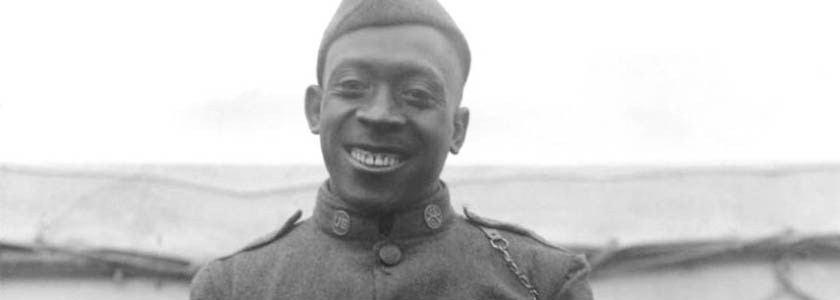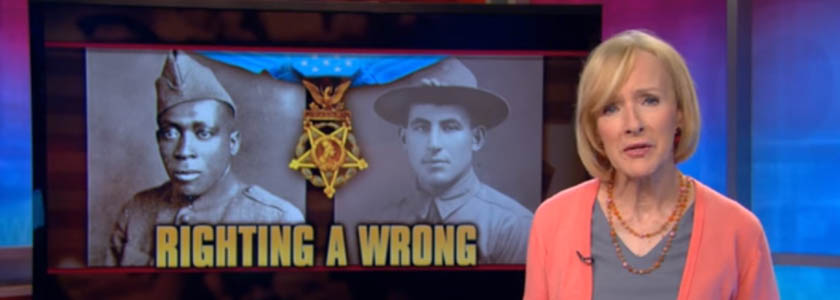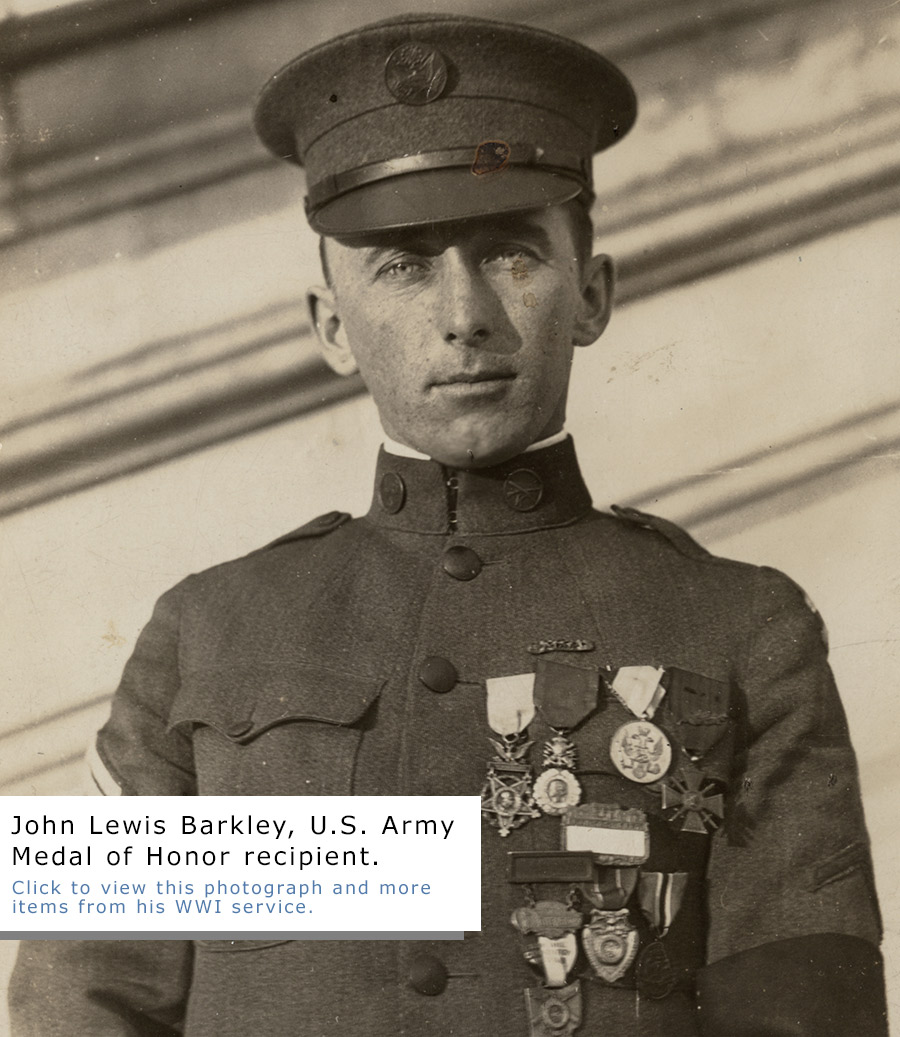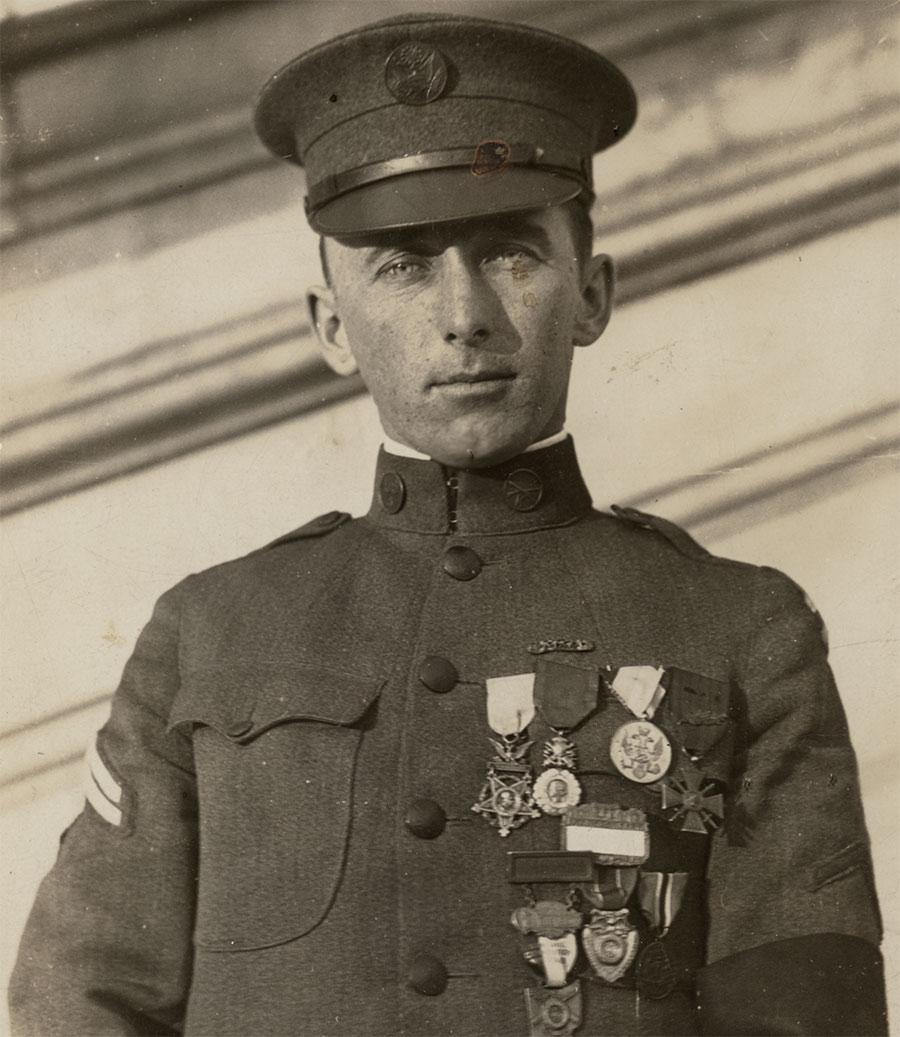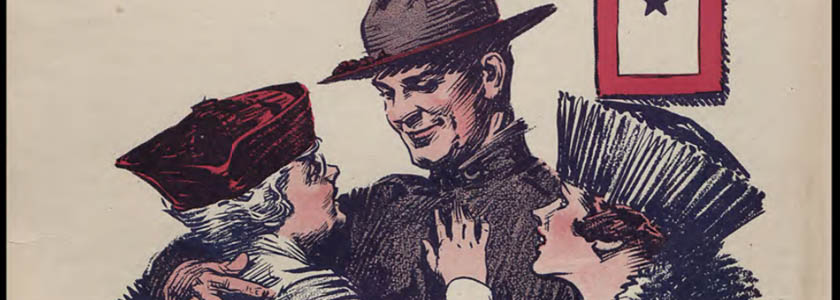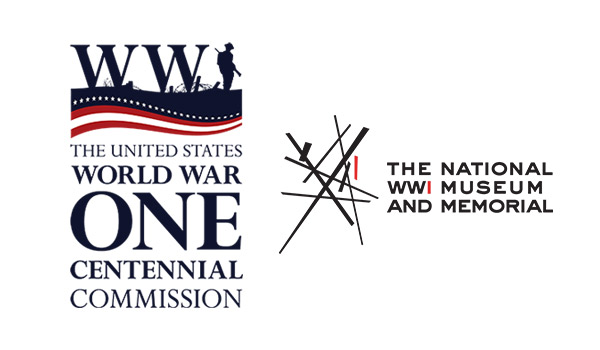Education Resources on WWI. You are receiving this email because you expressed interest. | View in browser
The Medal of Honor is the United States’ most prestigious military award, given to those who have demonstrated extraordinary bravery in the line of service. According to the Congressional Medal of Honor Society, 127 recipients received the Medal of Honor for their actions in World War I, with 33 awarded posthumously. However, a number of WWI soldiers were overlooked for the award because of their race. After almost a century, these heroes are finally receiving the recognition they deserve.
In this issue, we learn about the history of the Medal of Honor and what it means today. We also look at resources available for genealogy research, allowing students to find their own family connections to WWI.
“After his platoon had suffered heavy casualties and three other noncommissioned officers had become casualties, Cpl. York assumed command. Fearlessly leading seven men, he charged with great daring a machine-gun nest which was pouring deadly and incessant fire upon his platoon. In his heroic feat the machine-gun nest was taken, together with four officers and 128 men and several guns.”
— Citation for Medal of Honor recipient Sergeant Alvin York.
Learn more about Sergeant York's life.
John Lewis Barkley was a U.S. Army Medal of Honor recipient in World War I. He went to France in 1918 and participated in the Meuse-Argonne offensive, the largest American offensive in U.S. military history.
On Oct. 7, Barkley mounted a captured German machine gun to a tank and manned it through German artillery barrages, allowing his regiment to maintain its mission. He was later awarded the Medal of Honor for his bravery and ingenuity. Today, the National WWI Museum and Memorial displays Barkley’s Medal of Honor and portrait on exhibition.
View letters, photographs and more primary source documents from his personal collection.
Learn more with the WWI Genealogy Research Guide, currently available to download for free.
The United States World War One Centennial Commission and the National WWI Museum and Memorial are dedicated to educating the public about the causes, events, and consequences of the conflict and we encourage the use of these resources to better understand the Great War and its enduring impact on the global community.
Partners on this project include:
Pritzker Military Museum and Library National Archives The Great War YouTube Channel MacArthur Memorial National History Day American Battle Monuments Commission Stanford History Education Group Center for Middle Eastern Studies, University of Arizona HISTORY® AFS Intercultural Programs Library of Congress New York State Archives Partnership Trust / New York State Archives Aberdeen Proving Ground The Map as History International Baccalaureate College Board Villanova University Facing History and Ourselves Mission du centenaire de la Première Guerre mondiale Virginia Cooperative Extension 4-H Google Arts & Culture Scholastic
The Pritzker Military Museum and Library is a founding sponsor of the United States World War One Centennial Commission.


